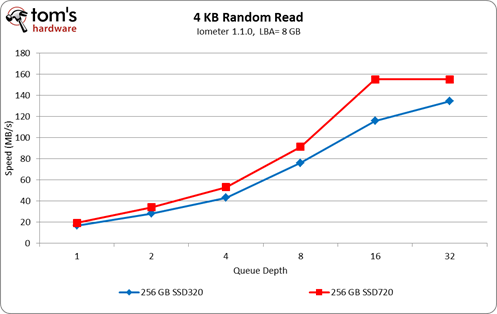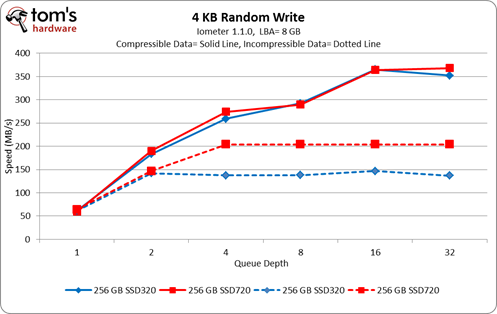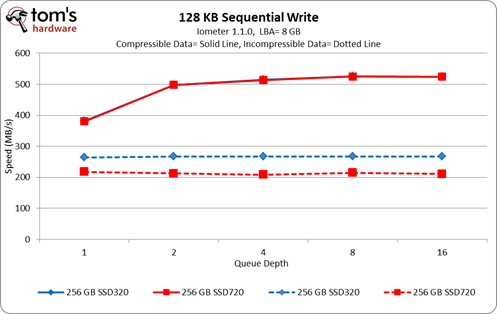Time To Upgrade: 10 SSDs Between 240 And 256 GB, Rounded Up
Transcend SSD720 And SSD320
Given the company's experience and reputation, we're not surprised to see so many vendors leverage SandForce's technology to build up compelling SSD portfolios.
Unlike most of its competition using the third-party controllers, however, Transcend chooses to disable over-provisioning. We'll explain what that means to performance shortly (or at least what it could mean under certain circumstances). Adata is the only other company in this round-up following suit.
Some manufacturers introduce multiple versions of their SandForce-based drives, choosing to create models with asynchronous ONFi-compatible flash, synchronous NAND, and Toggle-mode DDR memory. Transcend creates a bit of differentiation, however, by only selling at the two extremes. Its SSD320 employs the 25 nm asynchronous stuff, while its more enthusiast-oriented SSD720 leverages 24 nm Toggle-mode DDR NAND. In comparison, Adata’s flagship SX900 uses 25 nm synchronous flash.
Transcend's SSD320 and SSD720 are both covered by three-year warranties. The two drives also come with mounting brackets and installation guides.
We know from our testing that drives based on SandForce's logic can generally be sorted into three bins of performance based on that trio of memory interfaces. Because the SSD320 uses asynchronous NAND and the SSD720 uses Toggle-mode DDR, the difference between them is particularly apparent.
In random reads, the SSD720 leads by up to 40 MB/s, though you need very high queue depths to achieve that separation. On the desktop, you're just not going to see the difference. When it comes to randomly writing compressible data, the two drives pace each other. Switch over to incompressible writes, though, and the SSD720 establishes a larger lead at queue depths of three and up.
Sequential read performance is darned near identical. It's also very similar while sequentially writing compressible data. Strangely, incompressible write performance ends up about 20 MB/s faster on the SSD320 than on the SSD720.
Get Tom's Hardware's best news and in-depth reviews, straight to your inbox.
By the way, is anyone else surprised to see Transcend come so close to Intel's SSD 320 model name? Even the SSD720 seems dangerously close to Intel's SSD 710.
Current page: Transcend SSD720 And SSD320
Prev Page SanDisk Extreme Next Page Test Setup And Benchmarks




